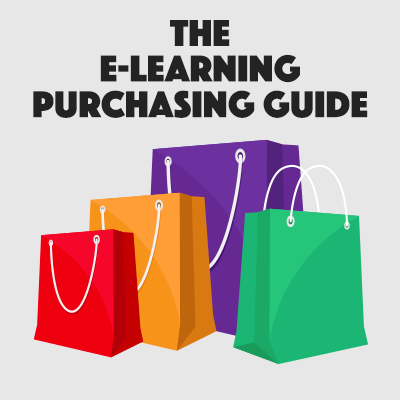The e-Learning Purchasing Guide Of Buying e-Learning Software
You’re in luck today! Here’s an e-Learning purchasing guide to help outline the basics of buying e-Learning software:
How will you create your e-Learning course?
To create e-Learning courses, you’ll need to purchase an authoring tool. (And in case you’re still learning all the e-Learning terminology, this has nothing to do with writers or literature.) An authoring tool is software that allows you to create your courseware, web page or multimedia applications. Usually, these are designed for someone who doesn’t have a programming background, although some allow more creative freedom if you do want to show off your skills. When you’re choosing which authoring tool is best for you and your organization, you should consider a few key factors:
- Desktop or Online
One major decision is whether your development team is going to work from desktop software or if they need the benefits of working online. Although you may not have considered cloud-based authoring before, you should try it out. Your team will enjoy the flexibility of working on courses from anywhere.
- Ease of Use
Purchasing an authoring tool that’s easy to use and easy to learn is important. This will save your training department tons of time and unnecessary frustration, especially when you have quickly approaching deadlines.
- Flexibility
Choose an authoring tool that allows you to design engaging, interactive training because the results will be worth it. Plus, once you’re an e-Learning pro, you’ll love the flexibility to create unique and innovative courses!
How will you deliver online training to employees?
The e-Learning world often uses the term “deploy” to talk about how training is going to be offered to learners. First, you’ll want to choose a learning management system (LMS) that fits your organization’s needs. These are a few factors to consider when selecting an LMS:
- Hosted vs. Self-hosted
A hosted LMS is hosted by the software provider. The software provider typically offers 24/7, 365 support, plus full backups every night. A self-hosted LMS is hosted on your organization’s server and behind your firewall. Support is provided during business hours and emergencies. This works well if your company has a dedicated IT staff and the infrastructure and resources to provide support as needed.
- Online, On-demand
If you’re looking to start quickly sharing informal and formal documents in your organization, you’ll want a cloud-based, on-demand LMS. This is an excellent solution for those looking for an immediate e-Learning deployment.
- Interface
Look for a customizable interface that’s also easy to navigate. In order to foster a successful training program, you want to make it easy for learners to use your LMS to access suggested training materials. (A good LMS will be accessible and will comply with WCAG and Section 508 guidelines.)
- Mobile-compatible
Make sure the LMS you choose is mobile-friendly so that you can deliver training to mobile devices and employees who need to access materials on the go or offline.
For a more detailed list of what to consider when purchasing an LMS, read this white paper: Factors to Consider When Choosing an LMS.
Don’t be afraid to ask questions as you’re looking for the best software to purchase. Your e-Learning software provider should be happy to help you choose the right solutions that fit your organization’s needs. Best wishes as you begin your new training program!
New to e-Learning and looking for more info? Check out this article to help you get started: How to Get Started with e-Learning.







